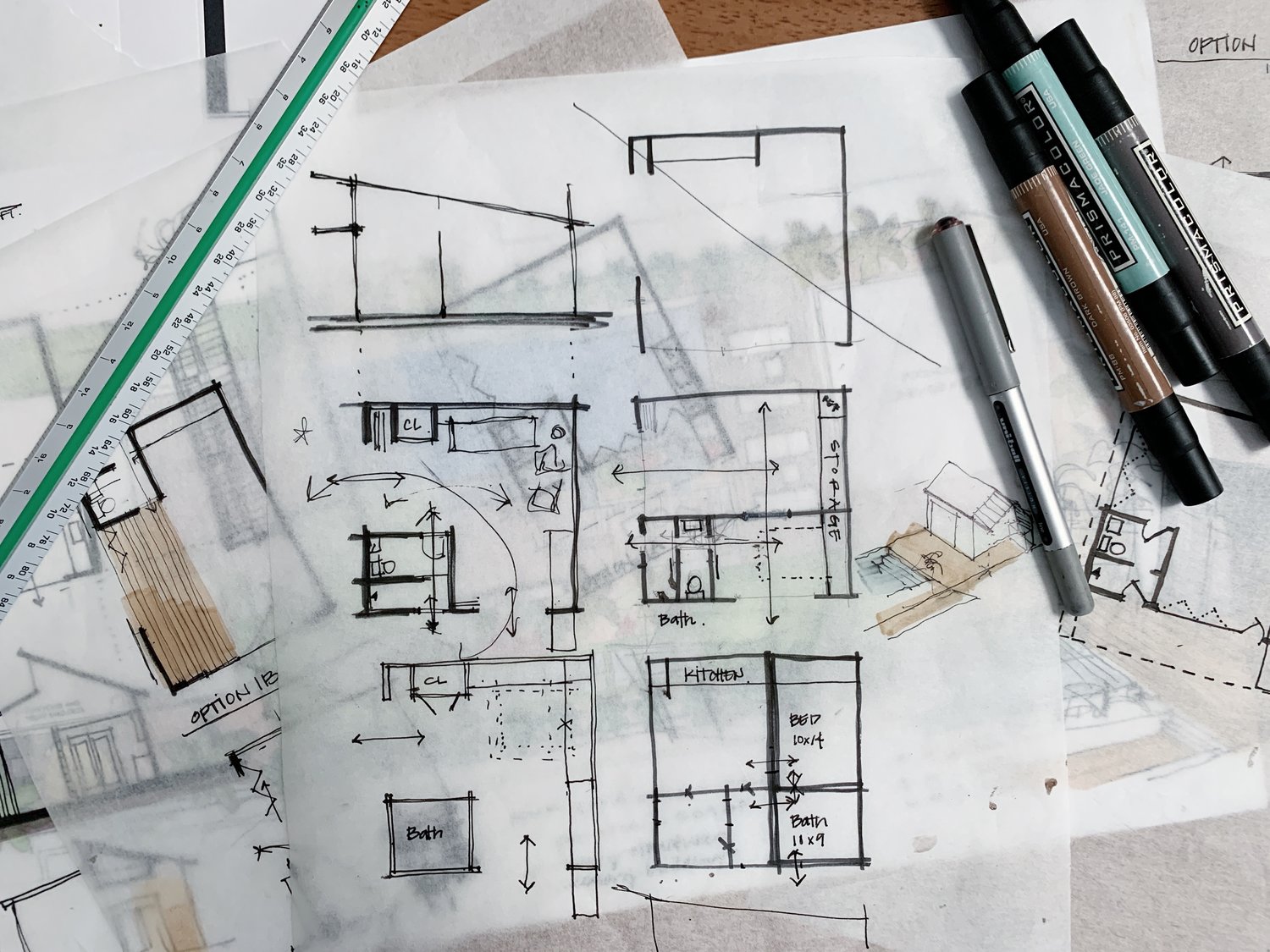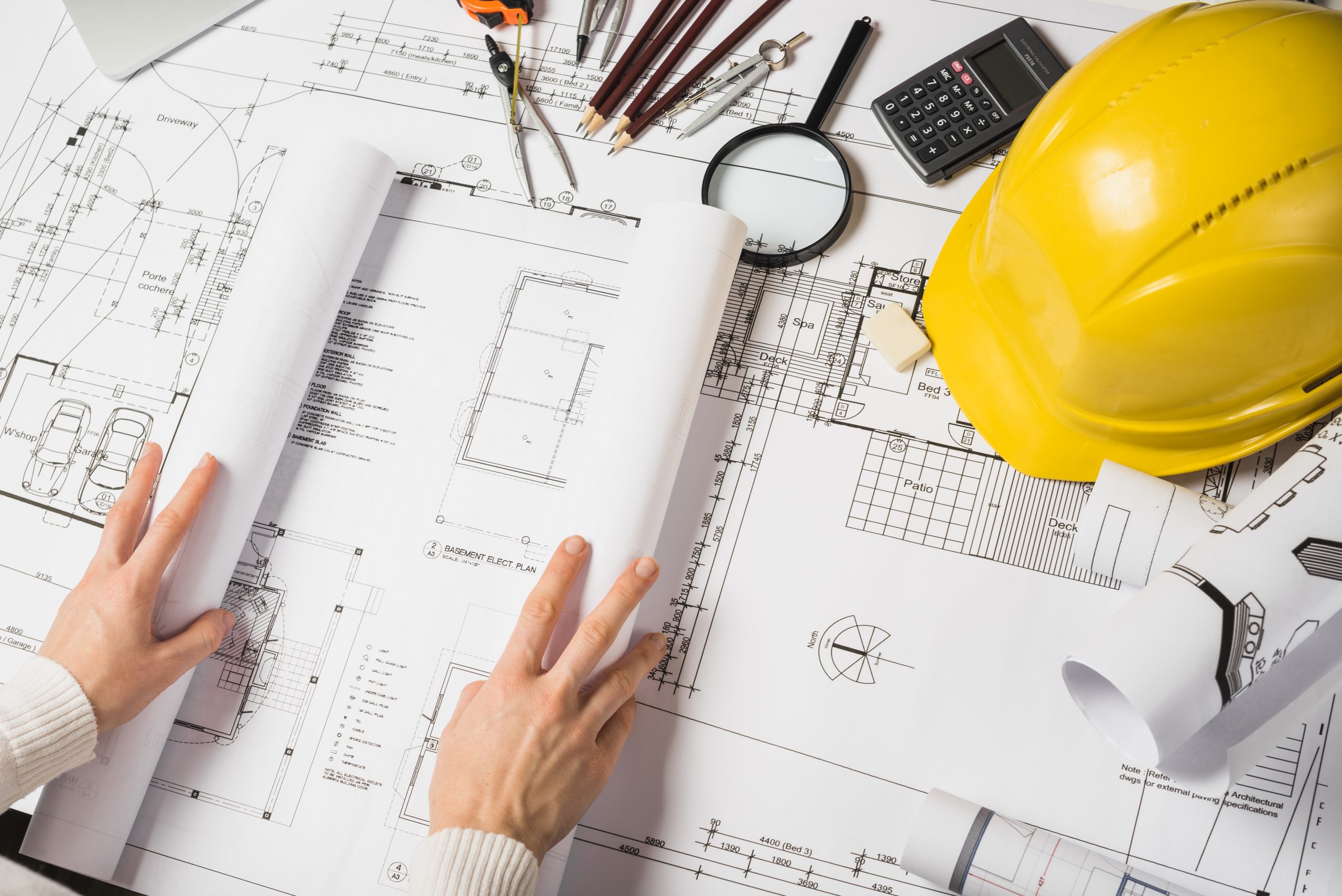Architect-Approved Home Improvement Ideas
Architect-Approved Home Improvement Ideas
Blog Article
Understanding the Diverse Job Paths Available for Aspiring Architect
As an aspiring Architect, you have a world of job courses waiting for you. Whether you're drawn to conventional design or the subtleties of sustainable style, there's a particular niche that aligns with your interests.
Standard Architecture: Designing Buildings and Frameworks
Conventional design concentrates on developing structures and structures that mix capability with aesthetic charm. As you discover this area, you'll value the detailed equilibrium in between kind and objective. You'll find out to attract ideas from historical styles, incorporating elements like symmetry, materials, and craftsmanship. Your designs can reflect cultural heritage, showcasing regional customs while satisfying modern-day demands.
You'll establish skills in preparing, model-making, and site analysis, enabling you to envision and interact your ideas efficiently. Engaging with clients, you'll need to recognize their vision and equate it into feasible layouts.
Moreover, developing codes and sustainability practices are important in your job, guaranteeing your structures are safe and eco-friendly. As you expand in your occupation, you'll find possibilities in property, industrial, and even repair jobs, each offering unique difficulties. Embracing typical design leads the method for a fulfilling job that admires the past while forming the future.
Urban Preparation: Shaping Areas and Public Spaces
As a hopeful Architect, you can play an essential function as an urban coordinator, transforming exactly how communities engage and function. By using neighborhood engagement approaches, you'll ensure that residents have a voice in forming their environment. Plus, integrating sustainable layout principles will aid develop spaces that not just fulfill today's needs however additionally protect the future.
Role of Urban Planners
While many may assume of engineers as the single enthusiasts behind buildings, urban planners play an important role in forming the wider landscape of neighborhoods and public spaces. By collaborating with various stakeholders, you'll assist design parks, transportation systems, and property areas that advertise social interaction and accessibility. Your experience in spatial design and area characteristics enables you to visualize future development while protecting cultural heritage.
Area Interaction Techniques
Reliable neighborhood engagement approaches are crucial for urban organizers to ensure that the voices of residents are listened to and valued in the planning procedure. To foster significant dialogue, you must prioritize open discussion forums and workshops where community participants can express their concepts and concerns. Use surveys and social networks to reach a wider audience, making sure varied point of views are included. Working together with local companies can improve trust fund and assist in deeper links. It is very important to provide clear info concerning decision-making processes and proposed jobs, permitting residents to feel enlightened and empowered. By actively incorporating and listening comments, you'll develop spaces that reflect the neighborhood's demands, inevitably causing even more effective and sustainable metropolitan settings. Welcome transparency and continuous dialogue for enduring influence.
Sustainable Design Concepts
When designing city rooms, including lasting style principles is critical for developing settings that grow both environmentally and socially. You need to begin by focusing on energy efficiency, using materials that decrease waste and promote recycling. Take into consideration incorporating eco-friendly areas, like parks and gardens, to boost biodiversity and enhance air quality. Advertising walkability and public transportation can lessen reliance on cars, cultivating a much healthier neighborhood.
Designing with water preservation in mind is likewise vital-- think of rain yards and permeable surface areas to manage stormwater. Entailing neighborhood participants during the preparation process assurances that the spaces you produce fulfill their requirements and urge social interaction. By welcoming these principles, you'll add to vibrant, lasting city landscapes that profit everybody.

Landscape Design: Creating Lasting Outside Environments
As you discover landscape design, you'll discover crucial style principles that develop useful and stunning outdoor areas. Sustainable techniques play an important duty in guaranteeing these settings flourish while minimizing ecological impact. Plus, you'll locate a range of job chances that permit you to make a genuine distinction in just how individuals interact with nature.
Style Concepts in Landscape
Comprehending layout concepts in landscape architecture is crucial for developing sustainable exterior settings that integrate with nature. You'll require to ponder elements like percentage, range, and equilibrium to guarantee your designs feel natural and welcoming. Incorporating native plants not just boosts biodiversity but likewise lowers water use, making your landscape resilient. Consider the circulation of space and how individuals connect with it; paths and seating areas must invite exploration and leisure. In addition, focus on seasonal modifications, designing with materials that match the environments year-round (Architect). By focusing on sustainability and appearances, you can create outside rooms that enrich the neighborhood and advertise health. Welcoming these principles will certainly set a solid foundation for your occupation in landscape design.
Lasting Practices Summary
Sustainable techniques in landscape style not just concentrate on appearances yet likewise prioritize eco-friendly health and wellness and resource conservation. By incorporating indigenous plants, you boost biodiversity and lower the requirement for chemical fertilizers and chemicals. Carrying out efficient watering systems assists preserve water and lessens runoff, shielding close-by communities. You can make areas that promote dirt health, such as making use of organic products and practicing permaculture concepts. Additionally, including eco-friendly infrastructure, like rainfall gardens and porous pavements, help in stormwater administration and lowers urban warm. When you create outside environments with sustainability in mind, you contribute to a healthier planet and give rooms that cultivate area link. Eventually, these techniques guarantee your styles profit both individuals and the environment for many years ahead.
Career Opportunities Exploration
With a solid foundation in lasting methods, landscape architecture uses a variety of job courses that allow you to make a purposeful effect on the environment. Urban coordinators frequently team up with landscape designers to create eco-friendly spaces in city setups, improving city livability. If you're passionate regarding education and learning, think about becoming a landscape design instructor, inspiring future generations.
Lasting Style: Concentrating On Eco-Friendly Practices
As you explore your occupation in architecture, welcoming environment-friendly practices can establish you apart in an affordable field. Lasting design concentrates on developing buildings that decrease ecological effect while enhancing owner well-being. By integrating eco-friendly products, energy-efficient systems, and sustainable structure strategies, you'll contribute to a greener future.
Begin by obtaining knowledge of eco-friendly qualifications like LEED or BREEAM, wikipedia reference which can bolster your credentials. Think about just how natural light, ventilation, and thermal effectiveness can enhance layout. Team up with engineers and environmental experts Source to introduce solutions that reduce waste and save resources.
Do not neglect the importance of area participation-- engaging local stakeholders can inspire designs that harmonize with the environment. As customers significantly focus on sustainability, your expertise in environment-friendly methods will not only draw in jobs yet additionally accomplish your passion for responsible architecture. Accept this critical aspect of the profession, and view your job prosper.
Historic Preservation: Securing and Recovering Social Heritage
While you begin on your architectural journey, consider the important duty of historic conservation in maintaining our social heritage. This field concentrates on the protection and reconstruction of considerable buildings, websites, and structures that tell the stories of our past. By taking part in historical preservation, you'll assist safeguard the architectural tradition that forms community identity.
As a historical conservation Architect, you'll examine historic importance and examine the problem of structures. You'll work carefully with chroniclers and conservationists to ensure genuine restoration techniques are utilized. This occupation course enables you to mix creative thinking with study, allowing you to design services that appreciate original materials and craftsmanship.
Your work not only contributes to sustainability by recycling existing structures yet likewise promotes a feeling of pride within areas. Accepting this path will aid you come to be a guardian of background, protecting the tales and looks that improve our lives.
Interior Architecture: Enhancing Indoor Spaces
Historical conservation and interior style both share a dedication to improving the built setting, however they concentrate on various elements. While historic conservation highlights preserving a structure's historical and social value, interior style absolutely nos in on enhancing indoor rooms for performance and looks.
As a hopeful Architect, you'll locate that interior architecture permits you to mix creative thinking with technological abilities. You'll develop rooms that not only look excellent however also promote convenience and efficiency. This field includes recognizing just how light, shade, and products engage within an area, impacting state of mind and functionality.
You'll work with different tasks, from residential homes to commercial workplaces, ensuring that each setting fulfills the demands of its passengers. By prioritizing user experience, you can transform insides right into functional and motivating rooms, making a substantial effect on exactly how people communicate with their surroundings. Welcome the possibility to improve indoor environments and form the method people live and work.
Industrial Layout: Merging Functionality With Looks
Commercial design plays an important duty in producing products look here that seamlessly mix aesthetic appeals with functionality, ensuring that what you utilize daily is not just visually enticing however also sensible. As a hopeful Architect, you might immerse on your own in this area, concentrating on designing every little thing from furniture to customer electronics. Your job involves recognizing individual needs, products, and manufacturing processes, permitting you to produce cutting-edge services that boost daily experiences.
In commercial style, you'll usually work together with marketing experts, engineers, and makers, ensuring that your styles are not just beautiful however likewise practical. You'll find out to balance form and function, prioritizing functionality without giving up design. By sharpening your skills in mapping out, 3D modeling, and prototyping, you'll be well-appointed to bring your concepts to life. This career path provides a dynamic atmosphere where imagination satisfies usefulness, making it a fulfilling selection for engineers interested in shaping the products of tomorrow.
Frequently Asked Inquiries
What Educational Certifications Do I Required to End Up Being an Architect?
To come to be a designer, you'll need a professional level in design, generally a Bachelor's or Master's. Additionally, you'll need to complete a teaching fellowship and pass the Architect Enrollment Assessment to practice legitimately.
Are There Certification Needs for Different Architectural Job Paths?
Yes, there're accreditation requirements for different building paths. Architect. You'll need to pass examinations, full internships, and in some cases pursue specialized training, depending upon your selected emphasis, like landscape architecture, metropolitan style, or historical preservation
What Software Program Abilities Are Necessary for Engineers Today?

How Can I Gain Practical Experience While Examining Architecture?
You can get useful experience by interning at building firms, getting involved in style competitors, volunteering for area projects, or teaming up with classmates on real-world tasks. These opportunities improve your skills and develop beneficial connections in the sector.
What Job Opportunities Exist Outdoors Traditional Style Firms?
You can explore different job chances outside typical architecture firms, like city planning, interior style, landscape style, construction administration, realty development, or perhaps duties in sustainability consulting. Each deals unique difficulties and incentives.
Whether you're attracted to traditional design or the subtleties of lasting layout, there's a specific niche that lines up with your passions.When designing urban areas, including lasting design principles is vital for developing environments that grow both environmentally and socially.As you discover landscape style, you'll uncover important design principles that produce gorgeous and practical outdoor spaces.Comprehending style concepts in landscape design is crucial for developing lasting exterior settings that integrate with nature.In commercial style, you'll commonly work together with engineers, marketers, and manufacturers, guaranteeing that your designs are not just lovely however also feasible.
Report this page